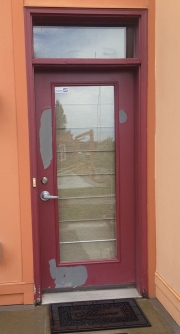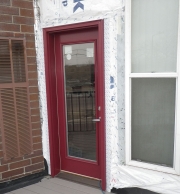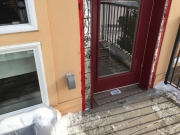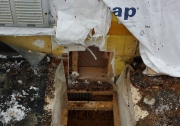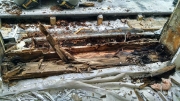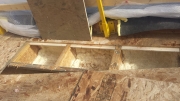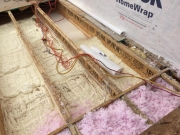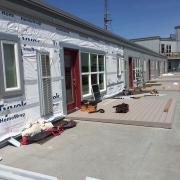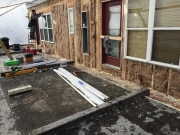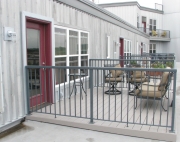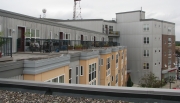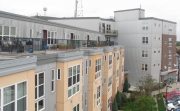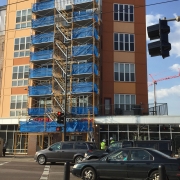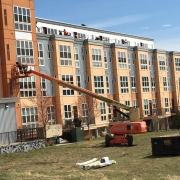Despite its numerous strengths, fiberglass siding from Apex, a product we had recommended and installed, was discontinued in the spring of 2015. There are two other products AMEK Exteriors continues to rank as in the top tier of long-lasting siding with superior appearance. Depending on your requirements and your budget, either choice will be a solid exterior siding decision. Here are some considerations for fiber cement vs. engineered wood.
Fiber cement siding which is created from a wood pulp and Portland cement combination is known for its resistance to rot, pest damage from termites and woodpeckers,and fire plus its longevity. Another feature is the minimal maintenance. Some fiber cement products are offered in a range of pre-finished colors while others can be painted with your own color of choice. Paint lasts much longer – 15 years vs. 5 years – which give homeowners the choice to change the color of the home without the worries of frequent paint jobs.
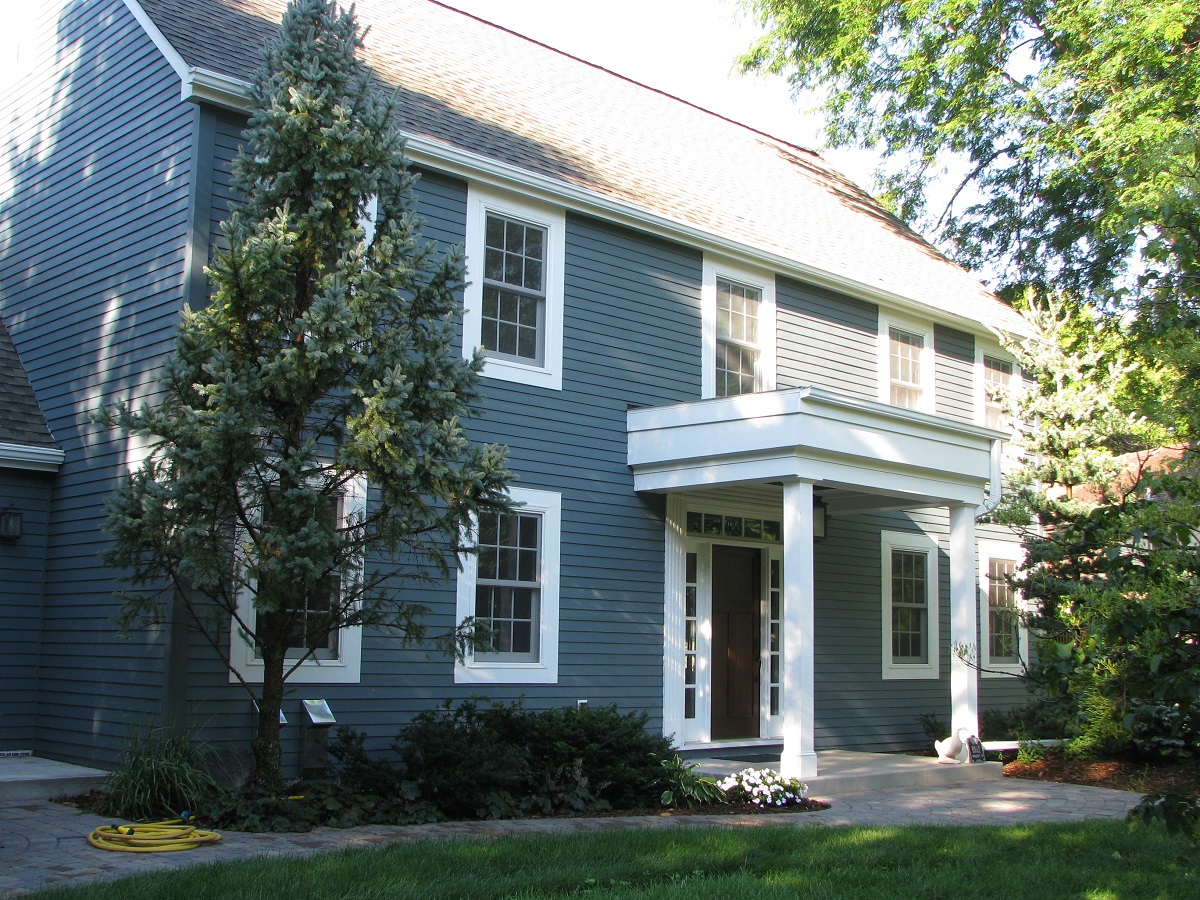
AMEK Exteriors regularly uses fiber cement products from James Hardie on their projects. James Hardie offers a long warranty on their products. According to Paul Schmidt, co-owner of AMEK Exteriors, “James Hardie is the best in the industry for their commitment to quality and service. They have a 30-year warranty on their products which is outstanding.”

Fiber cement siding installation does need skilled people who have the proper tools and who know how to correctly integrate the siding with windows, roof lines, and foundations. “I appreciate James Hardie because they provide installation guidelines and on-site training for our crews,” said Schmidt. “It’s critical that any siding is installed correctly to prevent future water intrusion issues, so I appreciate the dedication that James Hardie has to making sure that contractors know the proper installation methods.”
The appearance of fiber cement is realistic with possibilities of wood grain, cedar shakes, stucco, brick and stone. There is also a wide range of widths and lengths of boards. These options allow for a myriad of design possibilities giving homeowners custom looks from historical renovations to modern elements.
Another solid option is engineered wood. It’s like wood but with superhero characteristics. Formed out of real wood and resin, engineered wood has the advantages of being stronger and more durable. This strength helps it fend off moisture and pests like woodpeckers and carpenter ants plus isn’t easily impacted by rocks or balls hitting it.
Most engineered wood is easier to install because of the tools required and because of the longer pieces available which reduces the number of seams needed. However, trained installers are still vital to making sure manufacturer’s instructions are followed for seams, flashing, and end pieces.
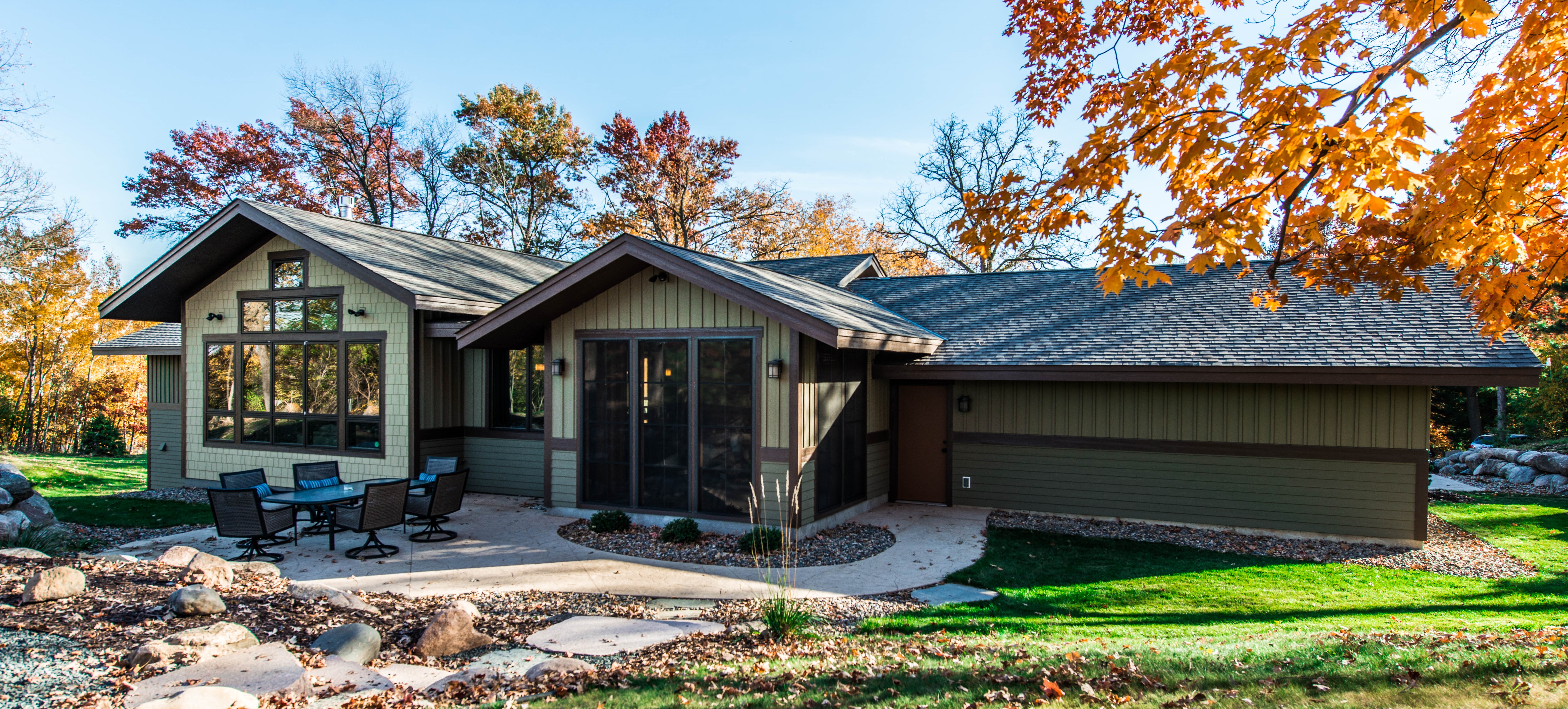
LP SmartSide has been incorporated into many AMEK Exteriors projects because of its lasting beautiful curb appeal backed by 50-year limited warranty LP SmartSide is available in a large array of colors and textures with matching trim pieces.
AMEK Exteriors is known for its distinctive exterior design, its construction defect knowledge, and its use of quality materials and craftspeople to give homeowners exceptional projects. In 2016, an AMEK Exteriors’ Minneapolis exterior project was

presented the National Contractor of the Year (CotY) Award by the National Association of the Remodeling Industry (NARI), the Remodeler of Merit Award (ROMA) from the Builders Association of the Twin Cities (BATC), and the Gold Design Award from the Professional Remodeler Magazine.

